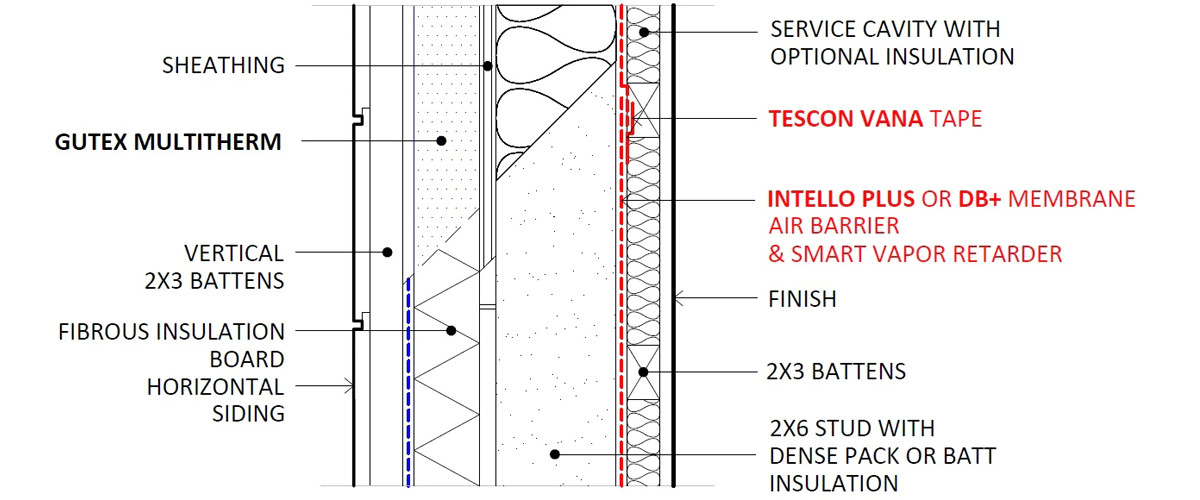The challenge to reach recommended airsealing results – 3.0ACH50 in the some building codes or 0.6ACH50 to meet Passive House requirements - can be readily overcome with good strategies. One key strategy, relatively new to the U.S. construction market but gaining ground, is to install a service cavity - or “installationsebene" in German. A service cavity is a utility chase between the interior wall finish and the interior air barrier. We know that it's best practice to locate the primary air barrier on the interior side of the insulation (for more on this see this blog post). A service cavity is giving a location to run the electrical components so they don't interrupt the interior air barrier.

The service cavity is typically formed by running wood battens horizontally inboard of the air and vapour control layer (INTELLO Plus membrane). The depth of the service cavity battens is based on the depth of the electrical outlets used. The service cavity makes the electrician's life easier, as they no longer have to drill through a large number of studs to wire the outlets and switches.
The service cavity can be used in retrofits or new construction to simplify the air barrier install. You can successfully install and interior air barrier without a service cavity (LINK). But without the service cavity the project will need to air seal all of the electrical components that'll penetrate the air barrier.
After all services are installed and before installing the drywall (or other interior finish), optional fibrous insulation can then also be installed in that cavity.
A service cavity greatly reduces the number of interior air barrier penetrations. The service cavity allows electrical changes to easily happen after the building is occupied. The home owner can relocate outlets or rerun wires without having to interrupt the air barrier, insulation, or access the structural framing. We are now building homes to last 100+ years, so let's allow access to the components that'll need maintenance or changes while limiting access to the air barrier, insulation, and structural components that don't need to be touched for the 100+ years.
After the drywall is installed, the airtight layer behind the service cavity will be protected from occupants hanging pictures or installing new shelves. These interior components can fasten into the service cavity battens instead of penetrating the air barrier.



